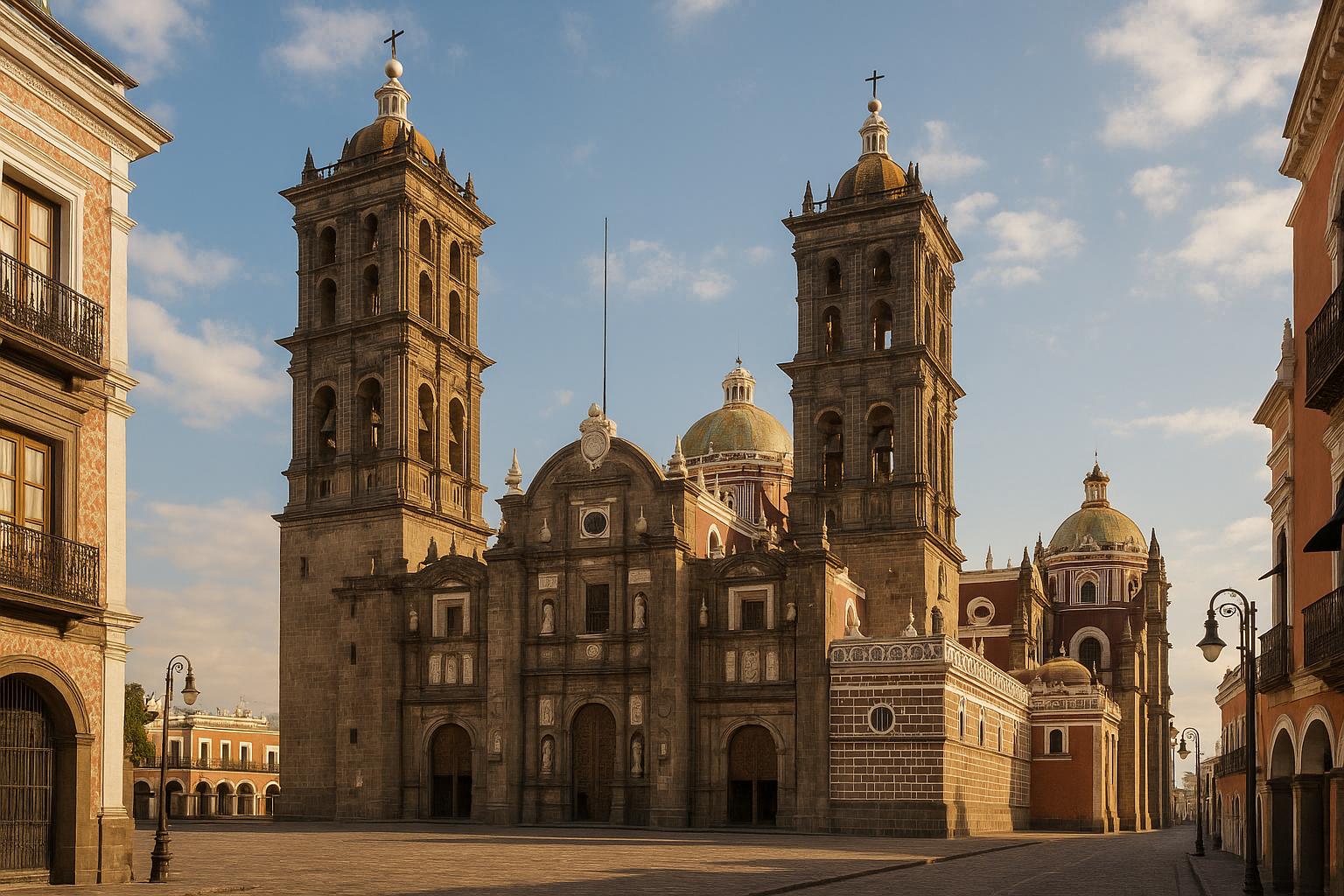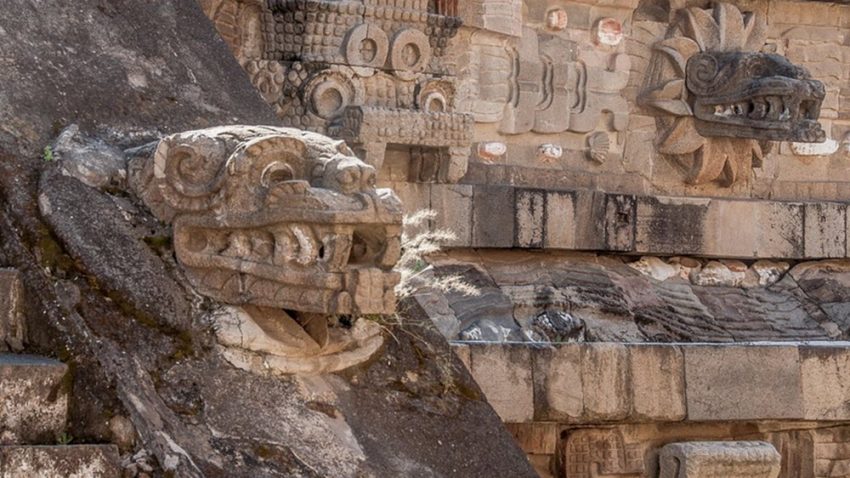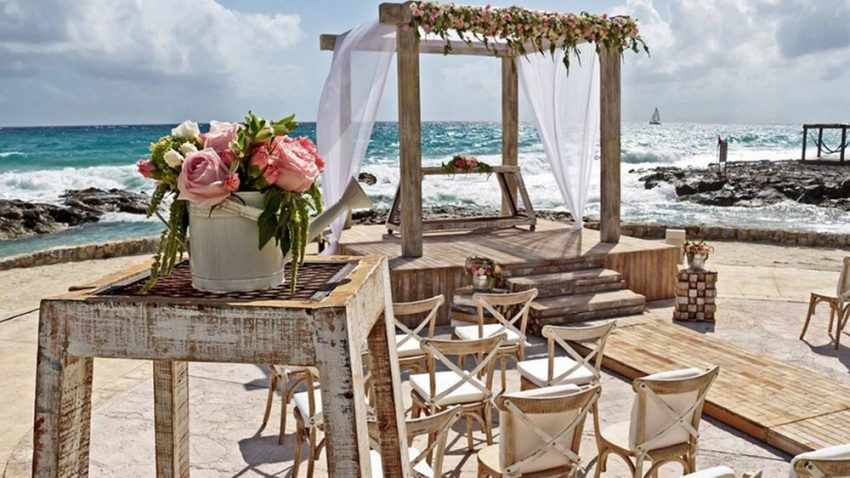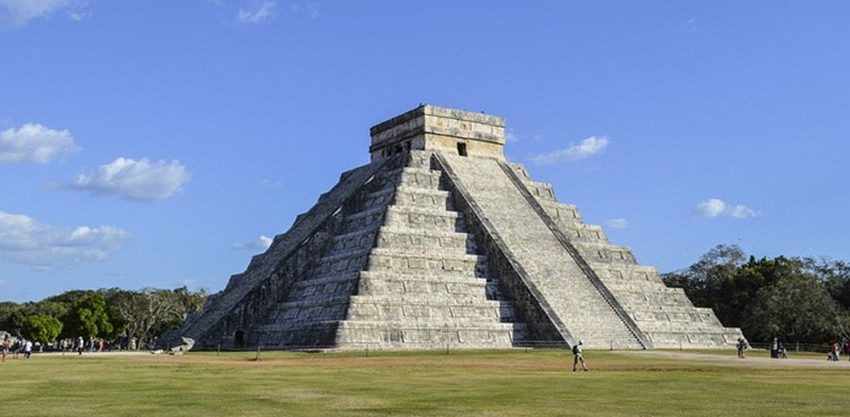Puebla’s Colonial Architecture: A Glimpse into History
Puebla, a city situated in central Mexico, is renowned for its colonial architecture. Established in 1531, Puebla offers a rich tapestry of historical influences, visible in its urban layout, religious edifices, and decorative facades. The city’s architectural styles reflect a blend of indigenous and European cultures that has evolved over centuries.
The strategic location of Puebla made it a significant settlement during the colonial period. This historical narrative is etched into the city’s streets and buildings, offering a unique glimpse into the past. As you walk through the city, you are continuously reminded of the blend of cultures that shaped its identity.
The Cathedral of Puebla
The Puebla Cathedral, one of the city’s most iconic structures, dominates the skyline with its grandeur. Constructed between 1575 and 1690, its design harmoniously blends Renaissance and Baroque elements, demonstrating the architectural evolution of that era. The imposing façade and towering bell towers rise majestically against the skyline, their shadow extending across the central square. These features stand as a celebratory achievement of human design and ingenuity, attracting visitors worldwide who are eager to admire its splendor.
Distinctive Features
Inside, the cathedral houses exquisite altarpieces and a main altar crafted by Manuel Tolsá, a prestigious Spanish architect. Adorned with paintings and sculptures, the interiors exemplify the colonial art form, making it a significant cultural landmark. The skilled hands of artists of yore have left their mark on every nook and corner, as visible in the multitude of carvings and moldings. Each piece of art inside the cathedral tells a story of its own, adding layers to its historical richness. The cathedral is not only a religious center but also a testament to the era’s architectural innovation, capturing a blend of reverence and awe within its walls.
The Historic Center
Puebla’s Centro Histórico is a UNESCO World Heritage site, home to an array of colonial buildings that speak to the city’s storied past. The urban plan reflects traditional Spanish city design, with a central plaza and a grid layout indicating the influence of European urban planning methods. Walking through the streets, one finds colonial houses characterized by their unique painted tiles, locally known as talavera. Talavera has become synonymous with the city and represents an enduring symbol of Puebla’s cultural identity.
Casa de los Muñecos
Among these structures is the Casa de los Muñecos, an 18th-century mansion named for its distinctive façade adorned with figurines. Today, it houses the Autonomous University of Puebla’s museum, offering visitors insights into the region’s history and cultural evolution. The fusion of historical narratives and modern-day academia here provides a fascinating juxtaposition that enriches the city’s cultural tapestry.
The building’s design features various architectural elements that hold significant historical importance. The playful yet artistic approach to the figurines displayed on the façade has sparked numerous interpretations over the centuries, adding to the mansion’s appeal as an enigmatic piece of architectural art.
Convento de San Francisco
Another significant site is the Convento de San Francisco, one of the oldest religious buildings in the city. Established shortly after the city’s foundation, it represents the Franciscan order’s influence in spreading Christianity throughout the region. The convent’s architecture embodies a simplistic yet enduring style, blending Gothic and Renaissance elements to create a space of serenity and devotion.
Influences
The city’s colonial architecture demonstrates the confluence of various styles, accompanied by the city’s own flair. This fascinating blend results from an amalgamation of indigenous motifs finding their place in European frameworks, resulting in a distinctive style that defines Puebla’s architectural characteristics. The talavera tiles that adorn numerous buildings are a superb example of this synthesis. Initially introduced by the Spanish, these tiles were later adapted with local flair to represent a unique form of artistic expression.
Through the centuries, Puebla has maintained its connection to its colonial past while allowing modern influences to seep in. This balance is visible in the city’s architecture, where new and old elements coexist, complementing and enhancing the overall aesthetic.
Conclusion
Puebla’s colonial architecture stands as a mirror to its past, showcasing a blend of cultural narratives and artistry. The preservation of these structures allows visitors to experience a historical journey through Mexico’s colonial era, with each edifice telling a story of its own. This journey is both educational and inspiring, providing a way to connect with history while appreciating the beauty of architectural design.
For more information on Puebla’s rich architectural heritage, consider exploring dedicated cultural and historical resources online. Exploring the city’s architecture opens a window into its history, revealing how the convergence of influences over the centuries shaped the Puebla known today. Whether you’re an architecture enthusiast, a history buff, or a curious traveler, Puebla offers a timeless experience deeply rooted in its colonial roots yet ever-evolving toward the future.







